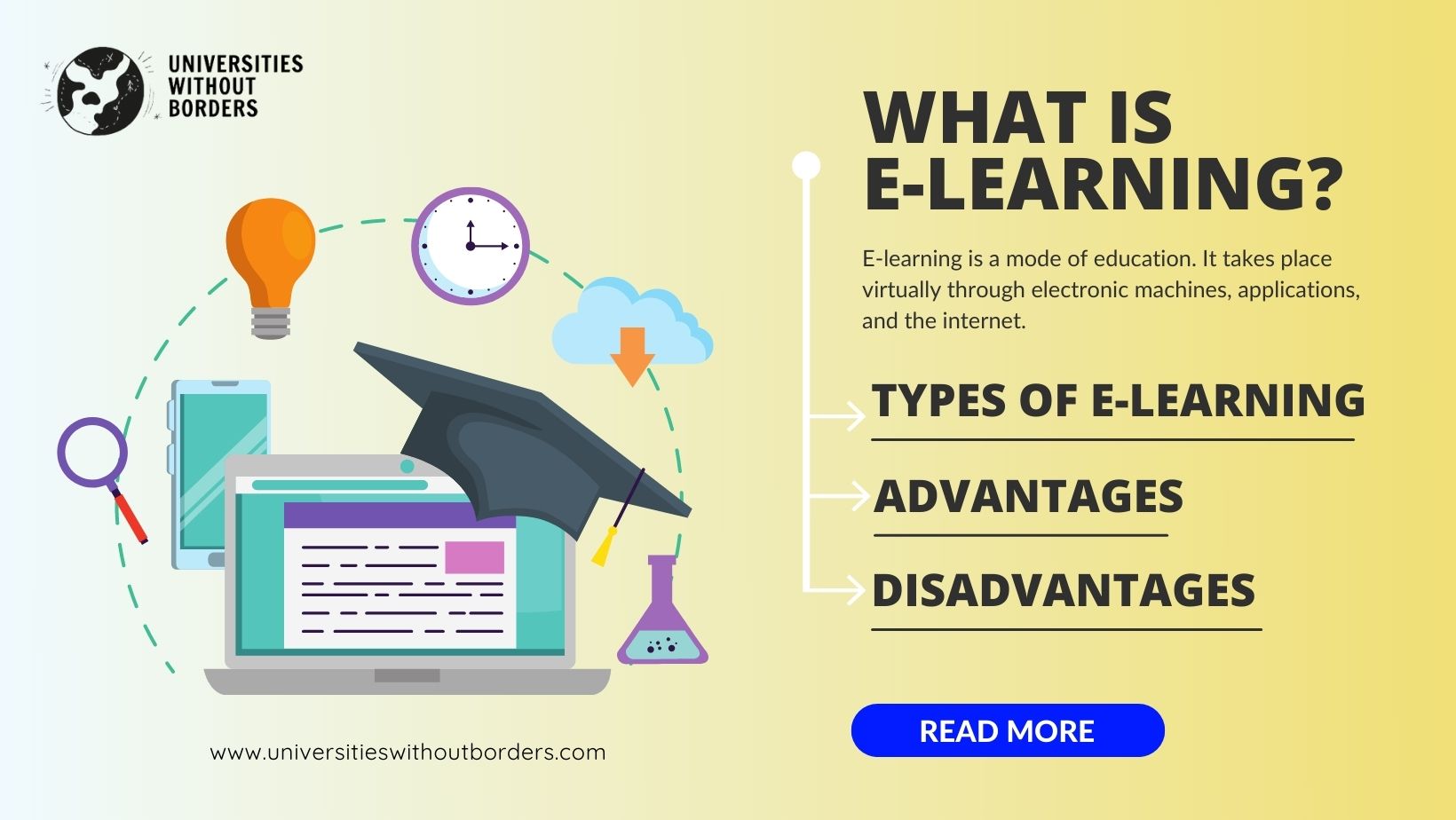
What is E-learning?
E-learning is a mode of education. It is rapidly becoming a key component of campus-based education and a distance learning foundation. It works on self-motivation, communication, efficiency, and technology.
- Due to limited social interaction, students keep themselves motivated.
- Students interact with the provider or instructor or other students, as the design supports, in the time of accomplishing their assignments.
- It saves from traveling, and if the design supports it aids learners to study at their convenience of time and pace.
- It takes place through technological devices, applications, and internet power.
The types of e-learning
E-learning types depend on – Means of communication, Schedule, E-learning class structure, Technologies used.
Means of Communication:
E-learning takes place solely through online applications. In some cases where “distance” is not a factor, it encompasses face-to-face or live communication to create blended e-learning. Blended or hybrid e-learning involves elements of web interaction and in-person interaction.
Schedule:
E-learning can either be Synchronous or Asynchronous. Synchronous means real-time it signifies transmission occurs as it happens, such as video conferencing and online chat programs. Asynchronous means not happening at the same time. It indicates communication takes place through e-books, online forums, recorded videos and so forth.
E-Learning Class Structure
E-learning class structure determines how the instruction dispenses. It ascribes – e-learning can be self-paced, instructor-led, or self-study with an expert. In the self-paced mode, the provider gives the study-learning material to the trainee or student. In Instructor-led training, a learner studies online under the guidance of an instructor who also checks the learners’ progress. Self-study with an expert is a blend of self-paced and instructor-led the two approaches. It features both learning self-responsibly staying on task, up the schedule and interacting with a guide.
Technology
E-learning takes place through not only web-based materials. It occurs utilizing any such form of technology that sustains information giving media. Video/Audiotape is a viable means to implement instruction. With new technological innovations arriving much, the most variable element is e-learning. The extension of internet networking techniques, since its advent, has been augmenting in powering e-learning. Cable modems replaced the dial-up connections and increased the speed and bandwidth. Increasing internet speed made even smaller devices compatible for managing large data transmission. It has led to the growth of flexible and popular mode – e-learning.
Advantages of E-learning
E-learning is beneficial to education, corporations and to all types of learners.
- E-learning is affordable. It saves time spent on traveling and hence pocket-friendly for a learner. Irrespective of which geographic location you are at you can do learning without relocating or traveling.
- E-learning benefits flexibility of suitability. Taking class anytime anywhere, at the office, at home, on the park, 24×7 days. Learners can fit e-learning into their busy schedules. Holding a job, they can manage learning with working. They can sit in their pajamas and do learning as and when desired.
- E-learning provides growth quantifiable tools. Measurable assessments created by instructors or education providers helps to measure the growth of a learner in relation to the course structure and performance.
- E-learning accommodates diverse learning styles. Students can learn at their own pace. They can learn through reading and watching and listening activities.
- E-learning encourages learning beyond the provided material through given hyperlinks and sites on the world wide web.
- E-learning is more focused on the learner. It makes learning interactive and interesting with the supplied visual aid used learning material in the form of e-books, ppts, and videos.
- E-learning inspires students to learn internet usage for knowledge. It helps them throughout their career. It makes them responsible for their learning and builds self-knowledge and self-confidence.
You must read –
Disadvantages of E-learning
E-learning entails technological conditions as it can solely be through a computer machine and the internet. A student must have some basic knowledge of computer skills and programs such as word processing, internet browsers, and emailing for learning electronically.
- Slow internet connection or faulty machines may restrict a learner from accessing the internet and course material and cause frustration.
- Beginner-level computer skills can make learning complex. In the absence of organizational skills, they can lose their assignment files.
- As it involves self-learning, students need to be highly self-motivated. Learners with low motivation or self-discipline can find themselves unable to study well.
- In the absence of routine structures of a traditional class, students may get confused about the course activities and deadlines.
- E-learners must have good comprehension skills as in the absence of lecturer learners have to study and understand the material themselves.
E-learning is a flexible means of teaching-learning that occurs through technology. High usability and low drawbacks the mode offers have made it a popular and highly desired method of learning today that government colleges and universities are offering online degree courses through this platform. Naming a few first comes the University of Mysore, a century older university offering several new streamlined degree courses online affordable for learners.
